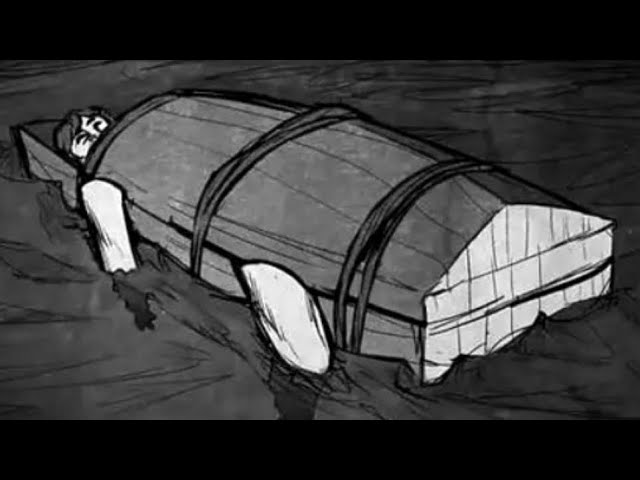Scaphism is a term that sends shivers down the spine. It encapsulates one of the most gruesome and horrifying methods of punishment ever devised.
It is a method of execution that straddled the thin line between cruelty and sadism. Scaphism was not merely a form of physical torment but a diabolical orchestration of prolonged suffering.
In this article, we delve into the depths of scaphism, exploring its definition, historical context, and its chilling purpose and use in ancient times.

What is Scaphism?
If you have never heard of Scaphism, consider yourself lucky. Scaphism was a form of torture. It was also known as “the boats,” and it originated in Persia.
The word itself has its roots in Greek, where “skaphe” means hollow or scooped out. True to its etymology, scaphism involves confining the victim within two hollowed-out “boats” or wooden containers.
They are shaped to fit the contours of the human body while leaving the victim’s head, hands, and feet exposed. These containers were then sealed together. This restricted their movement and left them helpless.
The gruesome process began with the victim being force-fed a mixture of honey and milk. This sticky concoction was also smeared over exposed parts of the victim’s body.
The force-feeding inevitably led to the victims defecating on themselves and filling the container with excrement. This disgusting combination invited swarms of insects, including flies, wasps, and even rodents, to converge.
The unfortunate victim, trapped within this macabre apparatus, becomes a living, breathing buffet for the relentless onslaught of vermin. It was a horrifying spectacle where insects not only feast upon the external wounds but also enter the body.
As the insects multiply and feast on the victim, the agony unfolds agonizingly slowly. The victim also experiences the torment of dehydration, malnutrition, and infection, all while being devoured from the inside out. The psychological toll of enduring such a drawn-out and brutal death made the helpless person beg for a swift death.
Historical Context and Origin
To fully grasp the horrors of scaphism and why it was used as a method of torture, we must step back in time to ancient Persia, where it first emerged.
The origins of scaphism can be traced back to the 5th century BC. This was a period when people were inventing new ways of torture like they come out with cutting-edge technological gadgets today.
While scaphism itself was primarily associated with Persian practices, variations of similar methods were adopted by other ancient civilizations. The exact techniques and objects used to secure the victim may have differed.
However, the essence of confining them and subjecting them to prolonged, agonizing torment through exposure to insects and animals were features that have been around for thousands of years.
It appears that cultural exchange extended beyond the realms of cuisine and new technology to include the sharing of gruesome techniques. It even spread into the realm of torture.
Use In Punishment and Deterrence
The spectacle of scaphism was not merely a means of punishing individuals. It served a dual purpose as both a deterrent and a psychological weapon.
These public exhibitions were meant to send a chilling message to the masses about the consequences of breaking the law. Beyond the physical suffering inflicted on the condemned, scaphism’s psychological impact reverberated through communities.
It became part of the cultural zeitgeist. Much in the way capital punishment today is used to deter crimes.
In ancient times, public executions were a spectacle that you could take the whole family to. In fact, families were encouraged to attend as they not only entertained the people but solidified in their minds what could happen if they broke the law.
Witnessing the prolonged and excruciating demise of those subjected to scaphism served as a stark warning. It instilled fear and trepidation within the community.
Scaphism transcended the physical realm and delved deep into psychological warfare. The knowledge that death was not immediate but a slow, inevitable descent into hellish agony heightened the psychological trauma.

In essence, scaphism functioned as a strategic tool for those in power to maintain social order through fear. Its deliberate cruelty was designed not only to punish but to leave a mark on the collective consciousness.
This made sure that the memory of such punishment lingered as a deterrent against future transgressions. The psychological scars left by scaphism were as potent, if not more so, than the physical torment.
This made it a truly formidable weapon in the arsenal of ancient methods of control.
Comparisons with Contemporary Forms of Punishment
As we look at scaphism in a modern context, we think of it as cruel and unusual punishment. We think it is something that we would never do today.
However, while overtly gruesome methods have largely been abandoned, the psychological and physical aspects of scaphism can still be found in modern forms of capital punishment.
In today’s society, the essence of these executions has not really changed at all. The death penalty and life imprisonment continue to be administered in the United States and other parts of the world.
Its methods have evolved to be more “clinical” and “humane” (if taking a human life is considered humane). But the fundamental purpose remains rooted in the deterrence of criminal crimes.
Even the concept of public executions has not changed very much. In the United States, public executions are still implemented today in the form of inviting victim’s families to watch behind a wall of glass.
This public exposure echoes the historical practice of public executions. The spectacle served not only as a means of punishment but as a stark warning to potential offenders.
The act of inviting people to witness executions, whether in person or through media, raises ethical questions about the role of punishment in shaping societal norms. While the methods and justifications have evolved, the underlying principle of using capital punishment as a deterrent and a tool for shaping public behavior persists to this day.
Conclusion
The infliction of suffering on other human beings raises questions about the morality of such practices. It challenges the fundamental principles of human rights.
By comparing the historical atrocity of scaphism with what we consider today to be humane and ethical standards, we can see stark similarities in their execution and purpose.
While the brutality of scaphism is undoubtedly horrific and disturbing, there are lessons we can learn from it. By citing the old adage, “Those who do not learn from history are doomed to repeat it”, we must acknowledge the darkness within our collective history or run the risk of repeating such atrocities.
Understanding the cultural, political, and psychological factors that led to the adoption of such methods allows us to appreciate the progress made in shaping more humane and ethical approaches to punishment.
References
Was Scaphism a Real Thing? https://talesoftimesforgotten.com/2020/05/23/was-scaphism-a-real-thing/
The Horrifying History Of Scaphism, The Excruciating Execution Method Of Ancient Persia
https://allthatsinteresting.com/scaphism
Scaphism: The Ancient Persian Torture Method That Killed Victims With Milk And Honey https://culturacolectiva.com/en/history/scaphism-ancient-persian-torture-method-with-milk-and-honey/

